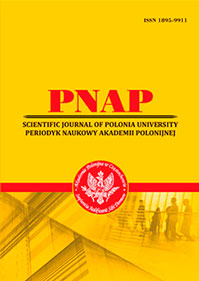DEVELOPING OF CULT CONSTRUCTION PARADIGM IN JOHN GALSWORTHY’S CREATIVE WORKS
Abstract
The article is focused on the analysis of John Galsworthy creative works, the paradigm of Cult Construction in particular. The analysis is conducted in the framework of function linguistics which considers text to be an action involving both the author and the reader. Paradigmatic organization analysis claims to present a model of text perception. In the course of text understanding, the recipient moves from textual syntagmatics (words are lined up in the text) to mental paradigmatics (“subject” images are linked according to the laws of logic and associations). Text understanding depends on paradigms’ characteristics and the interparadigmatic links. The analysis of the text paradigmatic organization includes individual paradigms distinguishing; characterization of the composition, functions, mode of expression and configuration of paradigms and interparadigmatic relationships. John Galsworthy is a famous English novelist and playwright well-known for “The Forsyte Saga”. The Cult Construction paradigm does not represent the concept that is pricipal for the author. It rather reveals furthermore crucial notions (morality in fin de siècle, inferiority of marriage and property laws, nature and etc.). The evolution of the Cult Construction paradigm may be clearly traced in John Galsworthy’s works. Initially, John Galsworthy concentrates on sensorial aspects, describing cult constructions (“grey”, “black”, “stuffy”, “mellow darkness”, “it smelt only faintly of age and incense”, “cold”, etc.). The author contrasts cult constructions to nature turning this antagonism into life-death opposition. But the situation changes drastically with the development of the novelist’s individual style. A cathedral is described as “very rich”; “these old buildings gave one a feeling”; “a peculiar sensation, not unpleasant”; “the King’s English” (Galsworthy supported children learning to speak and write proper English); “it smelt only faintly of age and incense”; “nothing was unbeautiful” and it gives “a sense of escape”. Still accenting the sensorial aspect, Galsworthy removes the opposition.
References
2. С. Есенин и его окружение: А. Мариенгоф, Н. Клюев, Н. Клычков. Сопоставительный анализ лексики / И. И. Степанченко и др.; под науч. ред. И. И. Степанченко. Харьков, 2016. 234 с.
3. Степанченко И. И. Функционализм как альтернативная лингвистическая парадигма. Киев : Українське видавництво, 2014. 200 с.
4. Степанченко И. И. О конфигурации парадигматических структур поэтического текста (на материале стихотворений С. Есенина). Філологічні студії / за заг. ред. Л. А. Лисиченко. Харків, 2009. С. 328–339.
5. Knoester M. W. Faith of a novelist: religion in John Galsworthy’s work. 2006, February 23. URL: https://hdl.handle.net/1887/4303
 ISSN
ISSN 


.png)



